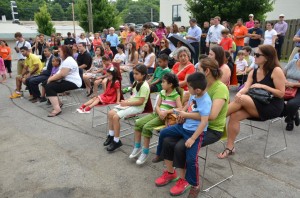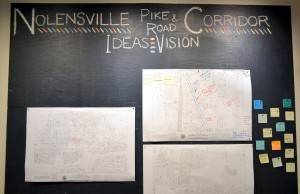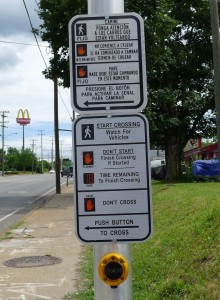I worked on part of a project in Nashville with main partners Conexión Américas (CA) and the Nashville Civic Design Center, an organization supporting development of the latino community in middle Tennessee. The project focused on the Nolensville Pike, which runs as an autocentric corridor through the South Nashville, a region where many immigrants have settled. In this area that has a large population of immigrants, many Latin Americans, a large Kurdish population in the U.S., and many immigrants from south and east Asia. The population of this area, just outside of the urban core, is growing quickly, but continues to maintain very typical suburban infrastructure. This means that the area is sprawling and not built for people but rather cars. Along the Pike speed limits are high, roads are wide, sidewalks crumbling, crosswalks few, (but growing number of) bikelanes sparse and it is just plain challenging to navigate these streets as a human and not an automobile. Auto-related injuries and deaths of pedestrians along the Pike are higher here than anywhere else in Nashville.
Despite the infrastructure, this neighborhood is thriving culturally and commercially. Casa Azafrán is a very active community center run by the beloved Conexión Américas; the Pike is home to a popular mosque; and many immigrant-run businesses dot the corridor. For economic and socio-cultural reasons, many residents in this area walk. Many rely on public transit, and walk from home to community centers, businesses, schools.
My team at Transportation for America & Nashville Civic Design Center worked with the latino community of Conexión Américas to address safety issues as they pertain to transportation infrastructure. With CA we held a workshop bringing together a wide variety of community members (members that CA typically engages with) to talk through some of the most pressing transportation-related challenges. Through these workshops, we identified that there was a divide between the older and younger generations about how they thought about transportation as well as the future of the area. To address this generational divide, we (the three organizations) facilitated a radio workshop in which the youth interviewed older residents about their experiences with transportation and hopes for the future and vice versa.
Through this arts-based research we collectively learned that there is no safe way for residents to cross the busy street to get to the very active Casa Azafrán building. The groups also identified language barriers in signage that was only in English. Many older residents aren’t bilingual and can’t read all signs. The group proposed a bilingual crosswalk in front of CA as a solution. This crosswalk would be the first of its kind in Tennessee!
The design justice principles which I believe this project implemented was that the process helped sustain and empower the participants and users. Through the workshops, participants began to understand their creative agency and learned a bit about how to work with the city and advocate for community needs. The effort was largely focused on centering the voices of the people who use this infrastructure to learn what is working for them and what isn’t. We also had to slow down our process and add in a new step of the radio interviews, acknowledging that design is an ‘emergent’ process. We collaborated with a design firm and my team’s role was more of facilitator. The design team, however, participated as well as facilitator. I think we could have spent more time learning more about what is already happening in the community to address transportation and linguistic challenges.


